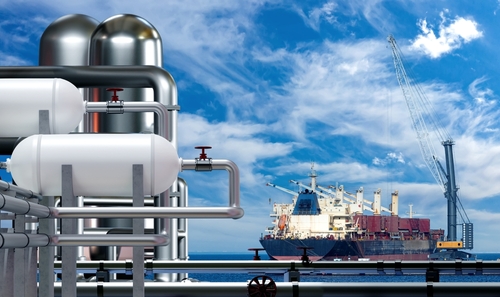
Thanks to abundant U.S. natural gas, American producers will be critical suppliers to help Europe meet growing energy demands, according to a new report released on Dec. 14 by the American Petroleum Institute (API) and International Association of Oil and Gas Producers (IOGP).
“Instead of restrictive policies that ignore the reality that global energy demand is rising, we need policymaking that recognizes the vital role U.S. LNG [liquefied natural gas] can play in meeting that demand while advancing global climate goals and promoting America’s national security interests,” API Vice President of Natural Gas Markets Rob Jennings said.
In less than a decade, the United States has become the largest exporter of LNG in the world, establishing America as a cornerstone of global energy security and driving local economic development, according to the report, entitled “Rebalancing Europe’s Gas Supplies, Second Edition.”
But despite recent progress in shoring up energy security following Russia’s invasion of Ukraine, Europe still could face a natural gas supply gap in the coming decades, says the report, which includes analysis by Rystad Energy.
“Europe is out of options short term and will likely have to heavily rely on significant growth in LNG market share to reach the 90 percent storage level mandate,” the report says. “Longer term offers more flexibility should Europe want to increase its right of first refusal LNG supply.”
So, as Europe continues working to reduce its reliance on Russian natural gas, U.S. LNG remains the most feasible, reliable, and competitive option to meet Europe’s natural gas demand, the report says.
In 2022, for instance, the U.S. surged more than 800 LNG cargoes to Europe, representing roughly two-thirds of its total LNG cargoes, and a 141 percent increase over the prior year.
“While U.S. LNG helped mitigate a potentially disastrous situation in 2022, there’s more work to be done to help ensure Europe and the global energy market are well-supplied in the long-term,” said Jennings.
Europe, which is committed to ending all Russian pipeline gas imports by 2027, needs 600 billion cubic meters (bcm), or the equivalent of roughly 12 billion cubic feet per day (BCFD), of natural gas supplies between 2023 and 2027. The report says that American LNG can help fill this significant supply gap.
Over the longer term, Europe’s supply gap could grow even larger, according to the report, which notes that between 2028 and 2040, Europe will need nearly 2,500 bcm, or an average of 18 BCFD, of new natural gas supplies.
Thus far, Europe has only contracted 32 percent of the LNG it could need over the 2028-2040 period and has signed less than half the number of long-term contracts that buyers in the Asia Pacific region have signed.
“Long-term contracts for LNG are crucial to helping ensure a stable supply of energy and minimizing the risks of demand uncertainty,” the report says. “American [natural gas] producers will be critical to supplying growing energy demand.”
The report also points out that realistic policies can help cement America’s status as a global energy leader.
“Timeliness and transparency across the permitting and approval process for the full LNG value chain is critical to ensuring the United States can deliver affordable energy and strengthen global energy security,” it says, adding that as coal-dependent countries look to natural gas to help lower emissions, abundant and reliable U.S. LNG also will help advance climate solutions and ensure global energy security.